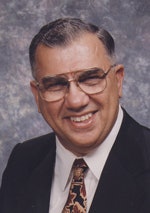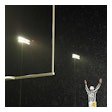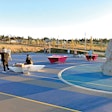
Recent bad publicity has gotten synthetic turf infill into the "dog house" about being a potential health hazard. Real or imagined, it has caused some to seek proven low-hazard alternatives to all infills, which in turn, will allow the synthetic turf industry to continue to grow without fear about infill hazards.
 Norris Legue
Norris Legue
A: No, because there are many good studies that indicate otherwise. However, there is one study that I would like to see, if it even exists. I'm either not aware of it or it has never been done, and that is on the effects on health, if any, by involuntarily ingesting synthetic turf infill.
Q: Why do you think this type of study is important?
A: When food is eaten, it enters the body in one form and after going through the stomach and chemical processing by the action of gastric and intestinal juices, enzymes and bacteria so that it can be absorbed by the body, it assumes a completely different appearance and chemical composition. My question is: Are hazardous ingredients on the surface of the ingested infill particles and/or within the infill itself taken into the body when passing through the digestive system?
Q: Until you get that answer, are there non-hazardous alternatives?
A: Many years ago, synthetic turf fields were successfully installed by gluing a shock absorbent subsurface and synthetic turf together without infill. It had some problems back then, which led to the use of infills, but I think that both progress over the years, plus my continued confidence in innovative synthetic turf manufacturers, will result in the development of good synthetic turf systems without infill by simply gluing the turf to the shock-absorbent subsurface.
Q: Are such installations done now?
A: Yes, many smaller non-athletic fields are glued down. Also, to my knowledge, the major types of athletic field glue-downs are synthetic turf field hockey fields. They do not use infill, but instead are glued down to a shock-absorbent subsurface.
Q: Assuming infill later gets a clean bill of health, do you think it will return?
A: It hasn't left, nor do I think it will. Many, including me, don't think it is a health hazard, so unless they are convinced otherwise, many people will continue to use infill. However, even if cleared, some will have enough doubt and won't want to take the risk if there is a glue-down alternative to turf to a shock-absorbent subsurface and no infill. Additionally, although more expensive, some think it's worth it because total glue-downs have many advantages over non-glue-downs with or without infills.
MORE FROM NORRIS LEGUE: Pros and Cons of Synthetic Turf
Norris Legue, "The Guru of Glue" and President of Synthetic Surfaces Inc., was a pioneer in the synthetic turf industry beginning in the late 1960's. He has been in the business ever since and is often consulted for his thoughts about its accomplishments, problems and future growth.
































